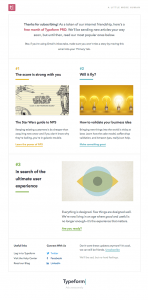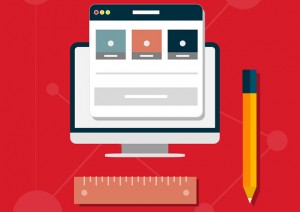Contributor Thomas Koletas discusses two great ways to use data to inform your business-to-business marketing strategy.

Modern B2B marketing and sales teams rely on several techniques to maintain customer interest throughout the buying process. Rather than the classic sales funnel, the customer’s journey is now treated as an ongoing course of marketing and education, sales outreach, and (eventually) a transaction.
Marketing automation is the engine that allows marketers to collect all touchpoints that occur during the customer’s path to purchase, and Big Data is the fuel that gives marketers this information to determine intent.
Two strong methods of incorporating Big Data are lead scoring and predictive analytics. Lead scoring adds years of sales know-how to the collected data to qualify the lead and determine how much of your resources and sales team you should apply to it. Predictive analytics combines structured and unstructured data, algorithms and other data to predict behavioral intent.
Add Insight With Lead Scoring
Lead scoring consists of analyzing data on prospective customers in order to properly gauge whether the prospect is valid — and if so, ranking that prospect based on their perceived value. One thing that sets it apart from other intent data tools is that there is an element of human oversight. After all the information is gathered and processed, it receives a man-made score.
There has been much written on how Big Data needs human interpretation to realize its potential, and that is certainly true of lead scoring. (If you want to quibble, you can say it’s a score based on man-made criteria.)
Here are a few tips to help you get the most out of this essential engagement technique:
- Set Criteria. Determine what’s important to your sales and marketing teams to nurture a lead. Be consistent and objective.
- Automate. Although there’s an element of human modeling in determining the ranking among leads, the hard work of going through all the data will be done by the algorithms you create. Collect and analyze all the contact leads you have with your offering.
- Factor In Explicit And Implicit Criteria. “Explicit” criteria refers to easy-to-find pieces of information that help determine whether leads are a good fit: company size, industry, products or services, etc. “Implicit” refers to the behavior of the interested party: Do they open emails? Register for webinars? Download white papers? These are interested prospects. Do they have control over budget or authority to buy? Find out who they are and then sort through the clutter.
- Coordinate Sales And Marketing. Cross-reference the leads in your database among departments; make sure good leads aren’t getting pummeled with messages.
Ranking leads makes campaigns more efficient and effective, and this sort of ranking data is the information most requested by sales. Using external criteria such as demographics and internal criteria like behavior analytics, marketers can determine customer intent and provide appropriate messaging at the points in which the customers are receptive to these messages.
Anticipate With Analytics
Predictive analytics provides mathematical and scientifically derived equations that forecast how your prospects might react to marketing efforts, enabling B2B companies to serve them at every pivotal point.
Most organizations need to prove a good return on investment (ROI) with their marketing efforts. Big Data lets your B2B organization do that by collecting data on what actions a customer took (Did they open the email? Did they click the link? Did they insert their email address?) and measuring actions that they didn’t take.
The more of this information that is gathered, the easier it is to predict positive outcomes (so you can double down on successful campaign efforts) and potential failures (so you can re-align marketing efforts elsewhere).
Here are some benefits for B2B incorporating predictive analytics:
- Ability to process large amounts of data and anticipate behavior
- Improved ROI—lower costs without decreasing business efficiency
- Response modeling—predicts purchases, responses and cancellations under certain conditions
- Uplift response modeling- incremental impact of direct marketing actions
- Customer retention and determining “churn,” aka, when customers leave the sales process
- Risk modeling and fraud detection, looks at financial and credit information to determine whether to do business with a company
- Data mining. By analyzing large amounts of data to look for patterns and systematic relationships, data mining is the foundation of predictive analytics.
Final Thoughts
Companies that use lead scoring and predictive analytics see superior results from their marketing campaigns, estimated at more than two times success over mass marketing campaigns.
B2B marketers use Big Data to provide multiple contacts along the way to serve and inform the prospect; and potentially convert to customers. B2B companies will benefit by employing both the human touch of lead scoring and the stone cold, data-mining number-crunching of analytics to determine which customers are valid and dedicate their resources accordingly.
(321)
Report Post







